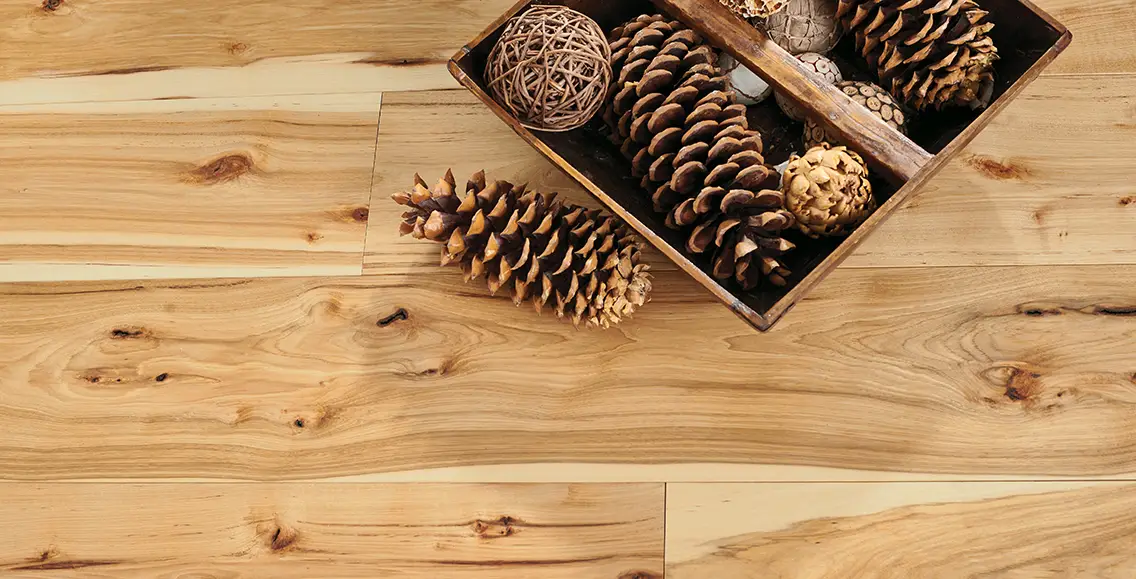Hickory has a “reputation” in the wood flooring industry.
Some people love it for its tensile strength, others shy away from it thinking it too rustic or “busy”, installers and builders are often nervous about its stability.
The good news is that not all wide plank Hickory floors have to be busy or unpredictable. In fact, with the right grading standards and manufacturing processes you can create a Hickory floor that will be beautiful, and stable, for any installation or environment.
Today, we’ll explain some of the most important design considerations to ensure your Hickory wood floor not only looks good, but will also be stable. We will also show you some great examples of all the different styles you can create from one of our most sought after wood floors.
Wide plank Hickory has a “reputation” in the wood flooring industry.
Some people love it for its tensile strength, others shy away from it because they think it’s too rustic or “busy,” and installers and builders are often nervous about its stability. The good news is that not all wide plank Hickory flooring has to be busy or unpredictable. In fact, with the right grading standards and manufacturing process, you can create a Hickory floor that will be beautiful and stable for any installation or environment.
As you shop for Hickory floors, you can review the list below and use it as a “shopping guide” of sorts. It gives you the most critical design considerations for your new floor to ensure it not only looks good but is also stable.
Where Does the Best Hickory Grow?
The best Hickory trees grow in the Appalachia region of New York and Pennsylvania. Cold climates limit the growth period for the Hickory tree, so it grows nice and slow. This allows it to develop more heartwood, tighter grain, girth and height.
The benefit of using northern-grown Hickory is that the floorboards have superior color consistency, better control over the floor’s “character,” wider planks and longer lengths.
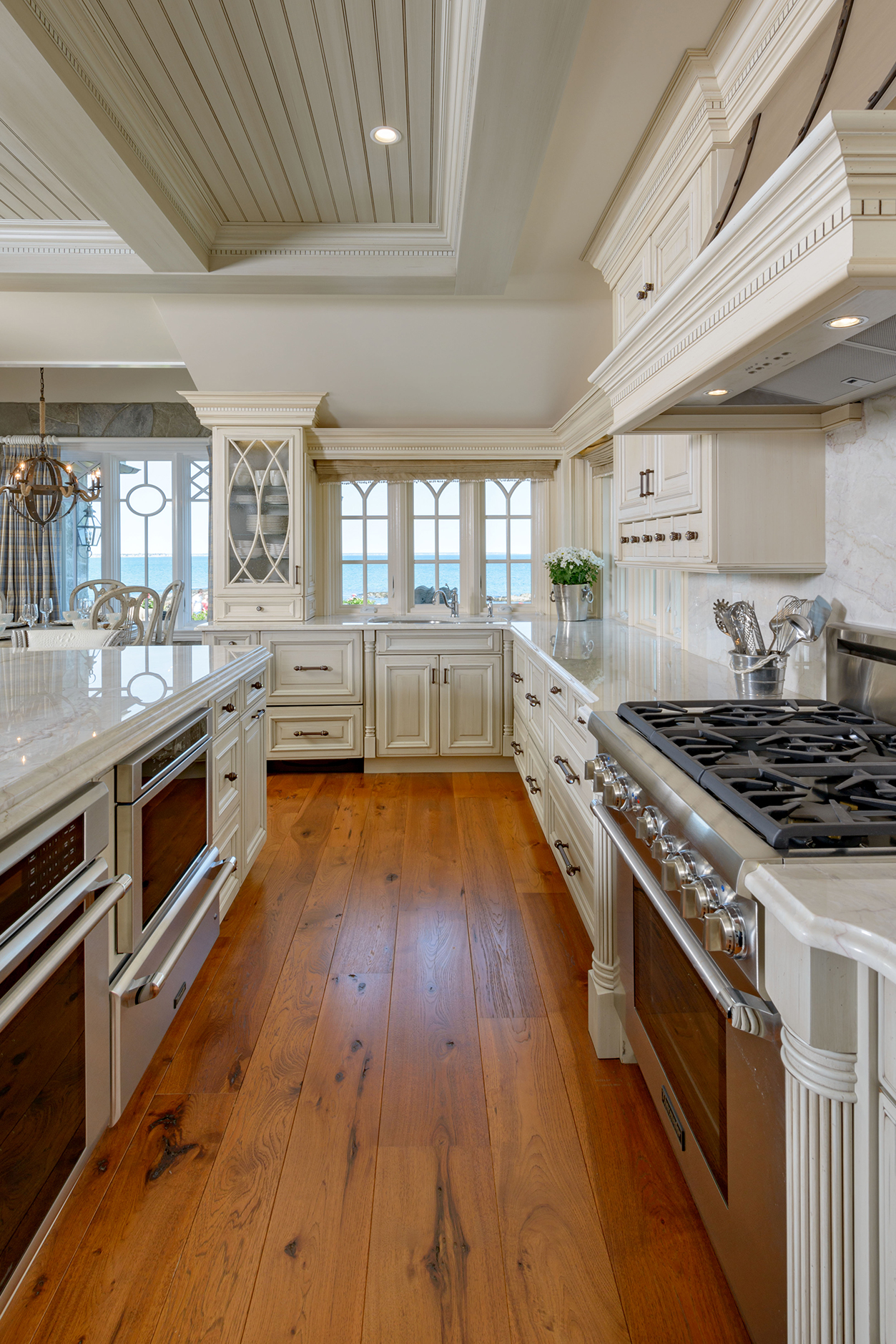
The First 40’ Of the Log
The highest quality Hickory hardwood flooring will come from the bottom 40’ of a mature Hickory log, never from the upper portions of the log or the branches and limbs.
This section of the log is the oldest part of the tree, so it will create more stable flooring boards with more heartwood and sound character that will not fall out or need filling.
The flooring boards will also be available in wider widths and longer lengths for the best look. This wide plank hickory floor, designed by Linda Cloutier Kitchens & Bath, has 6″, 8″, and 10″ random widths with up to 12′ lengths, naturally giving you the fewest amount of seams.
Air and Kiln-dried
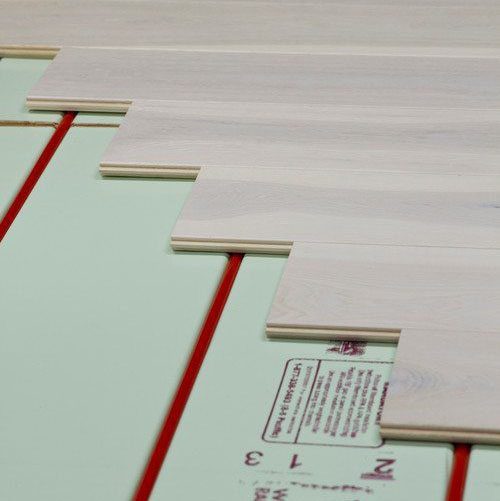
Hickory flooring should be air-dried for 3-6 months and then kiln-dried per order to enhance stability and maximize performance.
The air drying process slowly reduces the moisture accumulated over 80-100 years when the tree was growing. The kiln drying is done per order to bring all flooring boards to a consistent 7-9% moisture content.
This double-curing process also makes the wood’s fibers much healthier than kiln-dried Hickory fibers. That is why Carlisle hickory floors have been installed on radiant heat, concrete slabs, and waterfront homes.
Selective Grading
Hickory is available in a wide variety of wood grades. Most Hickory flooring is made from lumber-grade hickory, the same material used to build furniture or cabinets. Lumber grades are designed based on the quality of the lumber, and since it is often cut up into small pieces for furniture and cabinetry construction, it pays very little attention to how the wood is used to build a wide plank floor.
Proprietary grades, like those available from Carlisle, are created with quality and aesthetics in mind. You never compromise the quality of your hickory wood floor; you choose a grade based on the look you want to create.

How is the Floor Made?
Most flooring today is mechanically mass-produced. A rough board enters a machine and emerges as a floorboard. It is never seen or inspected for quality by a human being; it is just packaged up by SKU and shipped to the distributor.
Even though this flooring has all the exact specifications, the wood, color, and character will look dramatically different over an entire floor. To mitigate this risk, high-quality hardwood flooring can be made by carefully selecting, observing, and scrutiny of a craftsman. Through this hands-on process, the boards are chosen based on their quality, aesthetics, and consistency relative to the specifications set forth by the client.
Dimensions
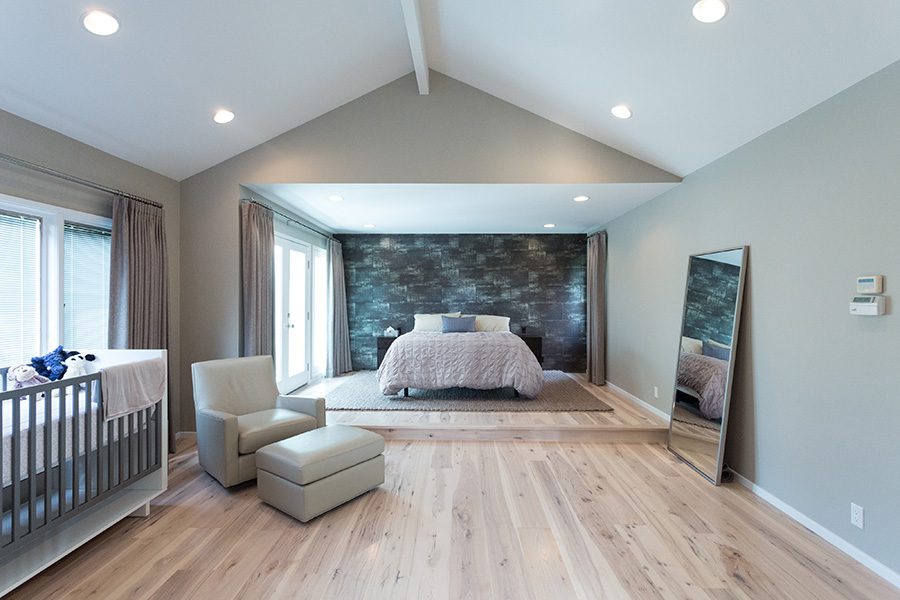
There is nothing more critical to the final look of your Hickory wood floor than the widths and lengths.
For example, most hardwood flooring is only 3” wide and 3” average length. A floor like Hickory, which already has a lot of natural variation and character, will create a very rustic floor.
Ideally, you want to select a Hickory floor that is a minimum of 8” wide, with 6” being the smallest width you would use. As for length, a 7’ average is the best. The purpose of using wider, longer boards is to minimize the seams on the floor. Fewer seams mean fewer distractions from the overall beauty and design of the room. In the bedroom above, the client wanted to maintain the tree’s integrity and embrace the wood’s natural character. Again, you will notice very few seams on this floor, just adding to the beauty of the overall look.
Solid vs. Engineered
Your decision to use solid or engineered wood flooring will depend, first, on the environment where you are installing the flooring and, second, on your expectations for your wood floor. It may also be determined by budget, as engineered hardwood flooring is often less expensive than solid options, and most engineered flooring uses a thinner veneer backing.
If you are considering an engineered wood floor, the flooring should be made just like a solid wood floor using the same material, so there is no aesthetic difference when the floor is installed. You also want to verify a 3/16” wear layer, just like a solid wood floor, and a 6’ average length. Widths will vary, but 8” is ideal.
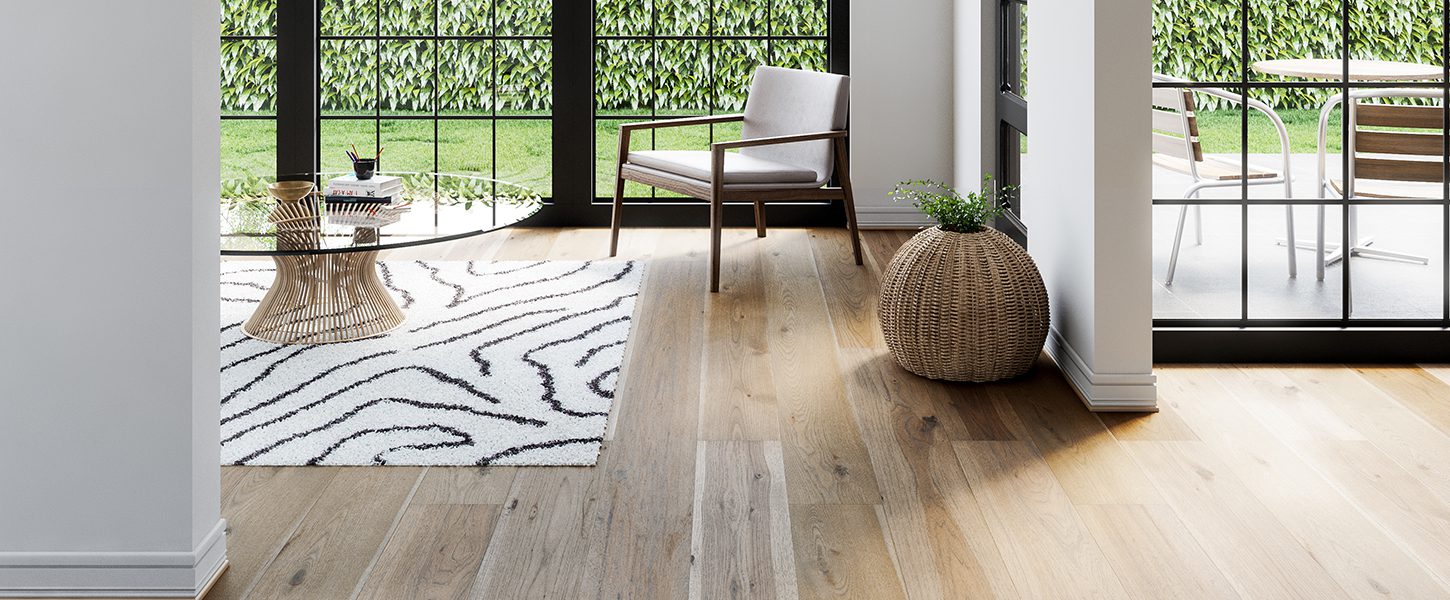
Header Photo: Alluvium | ID#: 12281
